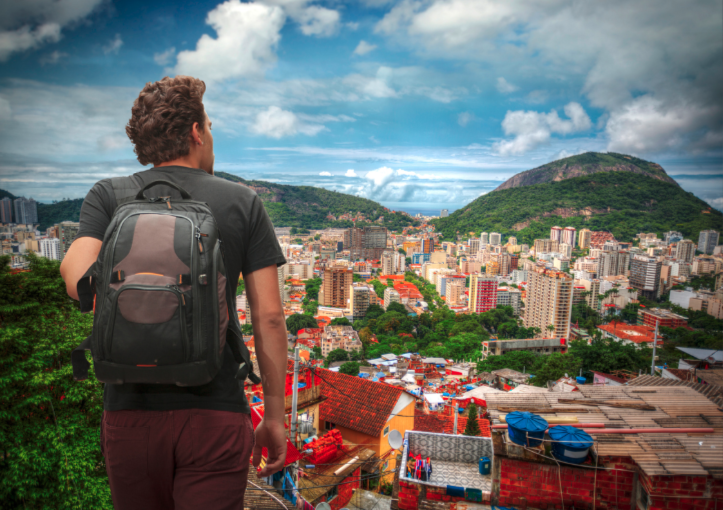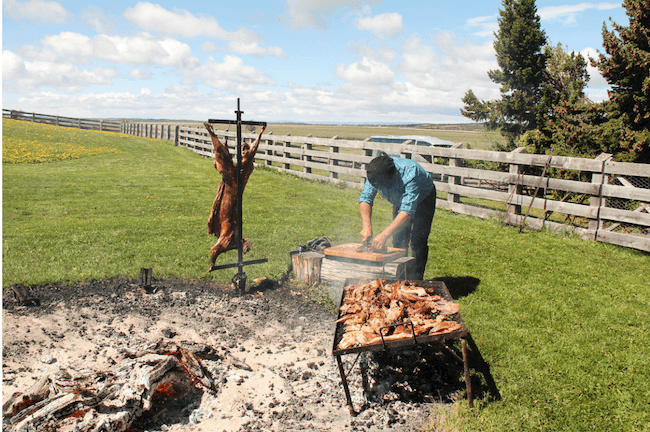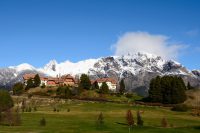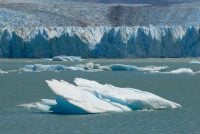If you crave a slower pace of life and enjoy extreme nature (and weather), Patagonia may be the place for you. That said, you can’t really generalize what it is to live in Argentine Patagonia. The southern segment of South America is extremely varied in its landscape and climate, so life varies according to where you go.
Patagonia brings to mind stunning mountains and natural parks, guanacos and abundant marine wildlife. Much of Argentinian Patagonia is actually flat tableland with little geographic variation and little rain, where you can drive for hours on end and see nothing of interest.
But in the towns around the Andes Mountains running north-south, there is a lot going on. Here there is a healthy tourist industry due to the unique and beautiful geographic features such as the massive mountain peaks and imposing glaciers, and incredible opportunities for trekking and enjoying nature at its finest.
Many expats have found a home in these towns, particularly in the warmer northern regions. In towns such as San Carlos de Bariloche and El Bolsón, which have many draws for expat and digital nomads as a place to live.

Places to live in Patagonia
San Carlos de Bariloche
Bariloche is a popular destination for expats. Located in the Lakes District in a stunning location on the edge of an immense and pristine glacial lake with a mountain backdrop, surrounded by several more lakes that are popular destinations for Argentinian and foreign visitors in the summer for hiking and kayaking and other adventure sports.
In the winter, Bariloche is near the excellent ski field Cerro Catedral. Combine these lifestyle perks with decent and affordable healthcare, a good standard of education and lower rental costs than in North America, and the attraction as a destination for digital nomads becomes clear.
Digital nomads can have a good life earning US dollars or other currencies. As you’d expect, there isn’t a ton of work available locally, but expats can find employment as English teachers, guides in various activities and ski instructors (seasonal work) who can work in different languages to cater to the tourist influx in the ski season.
El Bolsón
A little further south sitting on the river Quemquemtreu, El Bolsón became a popular destination for hippies to relocate to in the 70s. With excellent hiking options and pure clean air, this village retains some of the remnants of the flower children and remains a popular, if small community. It is great for vegetarians, nature lovers, craft lovers and adventure lovers.
El Chaltén and El Calafete
Much further south in Patagonia, El Calafete is an eternal draw for visitors arriving for the once-in-a-lifetime experience of visiting the famous glacier Perito Moreno, the only one in the world that is still growing. There is work in the tourist industry here but little else, and many who settle in this cold climate travel north to warmer climes in the harsh winter months of July and August.
El Chaltén, also nestled within the Los Glaciares National Park, is an isolated town but a hub and a base for mountaineering and scenic day treks. It draws hikers arriving to visit Cerro Torre and Mount Fitz Roy.
The End of the Earth
Then there is the end of the World – Tierra del Fuego – where the weather is extreme, cold, windy, raw, and probably only for those who enjoy life off the wall, weird lifestyles and drastic climates.
Closer to Antarctica than to its own capital city Buenos Aires (1200 kms and more than 3,000 km, respectively), and the southernmost city in the world, Ushuaia is cold, harsh and windy. Most travel here to explore the Beagle Channel or as a point of departure to cruise to Antarctica. Those who actually live in Tierra del Fuego endure harsh conditions much of the year. Life is not cheap here as everything needs to be brought in from much further north.
Culture and customs in Patagonia
Lively culture
Argentina has a lively culture. The locals start going out young and go out until late. They eat dinner late, often 10 pm or later, they go out later, and start doing this very young. They love to party and socialize and they like to have days off. Like other Spanish cultures, Argentinians enjoy lots of public holidays.
Food in Patagonia

To live in a region, it’s best to enjoy the local food, which shouldn’t be difficult in Patagonia as long as you like meat. Lamb is a traditional staple of the region. Not all animals can be easily kept in this landscape but sheep are easily raised in Patagonia so the locals are experienced in cooking the meat, which is high quality and tender. Patagonian spit roast lamb (Cordero al palo) is considered a local delicacy. It is lamb seasoned with salt and roasted outdoors for several hours or all day so it is soft and tender.
But expect other meats (wild boar, deer, and even guanaco), unique cooking methods (some dishes are cooked in a hole in the ground with hot stones) with fusions of foreign and local methods, and excellent trout, salmon and crab and other seafood.
Cost of living
The cost of living in Argentina is lower than in North America or Europe. Expats living on a foreign wage can benefit from the lower rent prices offered in Argentina. For some things Patagonia may not be as reasonable as elsewhere due to transport costs, (short-term visitors should take their gear with them rather than have to buy anything locally) but overall, the costs of services and living costs are affordable.
Affordable medical care
The cost of medical care is reasonable in Argentina. It is so reasonable that it is even becoming quite a destination for medical tourism. Argentina has both private and public healthcare, with decent quality services. Many expats happily pay for private medical insurance, especially those from the US as the prices are comparably very affordable and the service provided is good.
No comments yet
There are no comments on this post yet.




Leave a comment